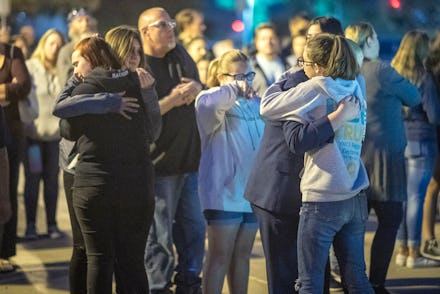Psychologists pinpoint the four personality traits that mass shooters share

Mass shooters are widely feared but narrowly understood. The U.S. government is trying to change that. A new study funded by the Department of Justice has analyzed all mass shootings since 1966, exploring what the gunmen have in common. It’s the largest study of its type ever paid for by the U.S. government.
The study was conducted by a group called The Violence Project, a nonpartisan think tank founded by psychologists at Minnesota's Hamline University, with the goal of reducing violence in society. The study consisted of several components, which included the creation of a a database of the 171 shootings — defined per FBI guidelines as involving the killing of four or more people in a public setting — that have taken place between 1966 and 2019. The database is coded on 99 “life history variables,” including mental health, trauma, and “interest in past shootings.” You can find the database here.
The study also explored larger sociological factors in the areas where the shootings occurred, exploring crime rates, inequality, and prevalence of household guns. Furthermore, the authors of the study conducted interviews with incarcerated shooters to determine what led to their actions.
In looking at the shootings, the authors of the study identified four key traits that tied together the perpetrators. Typically, they concluded, shooters had experienced childhood trauma, had identified a personal grievance, and had developed a “script” based on prior cases. They also, of course, could get their hands on a gun.
According to Vice, the first shooting analyzed occurred in 1966, when an ex-soldier killed 15 people at the University of Texas. The researchers started with this incident because it was the first mass shooting covered widely on TV.
The study revealed some frightening facts. For one thing, shootings are happening increasingly often; half of the shootings since 1966 have occurred since 2000, and 20% have taken place since 2014. Furthermore, the proportion of shootings that are motivated by hatred of a category of people, whether it's women, minorities, or religious people, has increased. The study drew a line from the rise of violent groups that have coalesced online, like incels — people, overwhelmingly men, who identify as "involuntarily celibate" and sort society based on those who have sex and those who do not — and the alt-right, to the rise in these types of shootings.
The Violence Project also identified five profile categories of shooters. This includes K-12 shooters, who are usually white males who plan their actions and steal guns from their family, compared with college shooters, who are more likely to be suicidal, non-white, and to write a manifesto. Other profiled groups include shooters at places of worship, commercial locations, and workplaces.
In an interview with Vice, Jillian Peterson, one of the authors of the study, explained that although The Violence Project is nonpartisan, she hopes the work can be used as a basis for policy-making. “Data is data,” said Peterson. “Data isn’t political. Our hope is that it pushes these conversations further.”